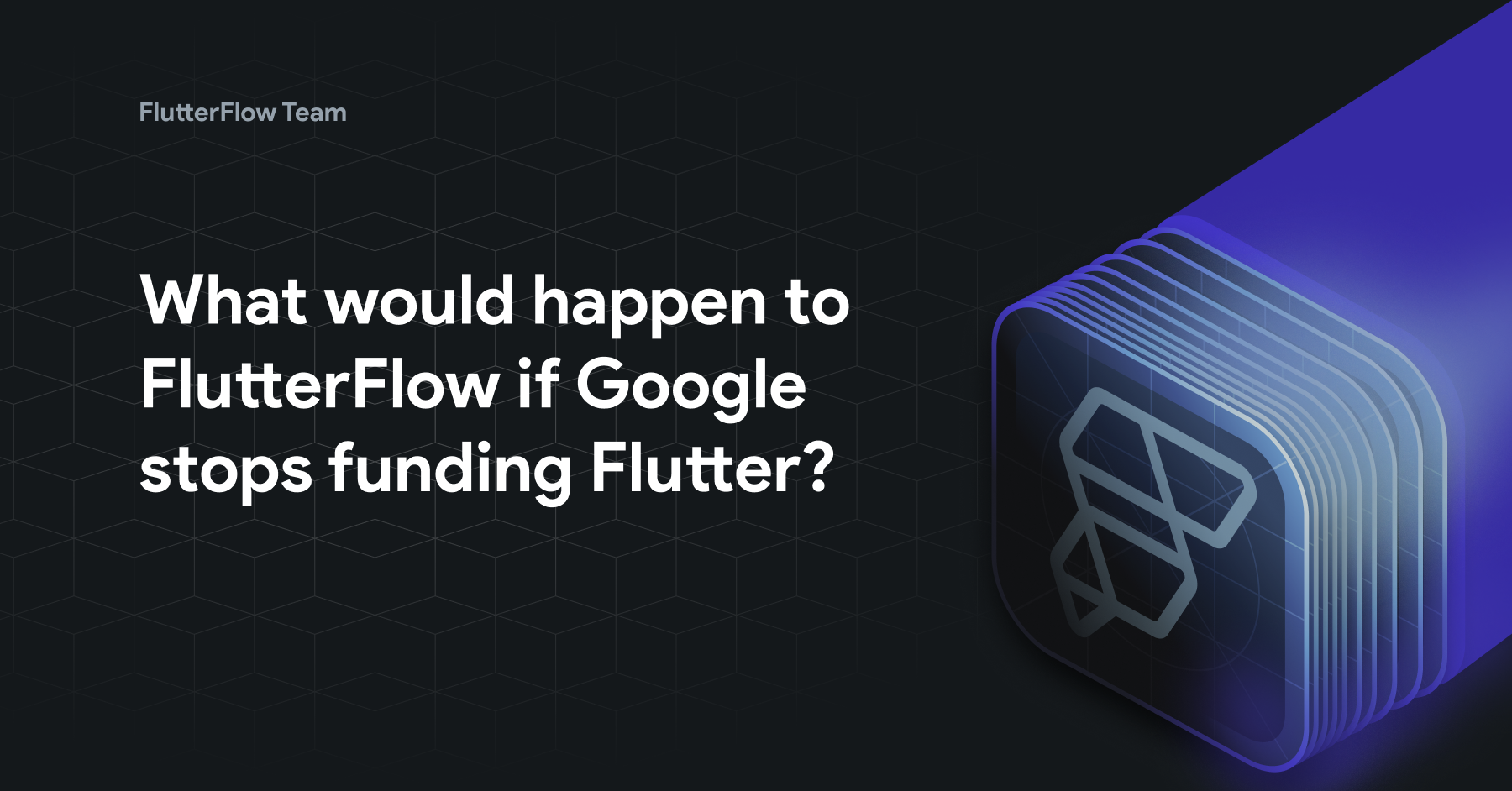It seems that every few months, a Twitter storm erupts with concerns about whether Google will discontinue Flutter. Having been part of the Flutter team at Google, I’ve encountered this question more times than I can count.
While it’s understandable to be cautious — after all, no one wants to invest time and resources into a technology that might not have longevity — there are several reasons why FlutterFlow users shouldn’t be worried.
We don’t think that Google will stop funding Flutter.
During my time working on Flutter at Google, the team was well-funded and had support from leadership. Flutter provides significant value to Google in various ways, like strengthening the Android and Chrome ecosystems and integrating seamlessly with developer tools like Firebase, Ads, and more.
Flutter is also in a great position as a product. More and more enterprises are adopting Flutter, with companies like GEICO, Universal, and the Virgin Group recently sharing their positive experiences with the framework.
More so, Google continues to use Flutter internally — with more recent investments from YouTube, Google Classroom and Google Earth.
Additionally, Flutter continues to maintain a healthy number of contributions and contributors, especially when compared to other frameworks. Flutter (left) has 2–3x more contributors than React Native (right).

This active community and corporate adoption highlight Flutter’s robust and promising future, and its continued value to Google. We’ve also continued to see big announcements from the Flutter team — like support for WASM (announced at I/O), and a strong presence at Cloud Next.
We think that Flutter would continue to thrive, even if Google stops investing.
Flutter is complete open source (as is Dart) and has a diverse group of contributors beyond Google. This includes notable individuals like Ian Hickson (Flutter’s tech lead). In fact, Ian recently published a blog that estimated about 15% of active contributors come from outside of Google. While that may not be enough to make Flutter “an order of magnitude better than other UI frameworks” — it’s enough to keep it alive and well in the interim.
However, I believe that in the absence of Google, other organizations would likely step up due to their significant investments in Flutter. Large enterprises like the ones mentioned above, consultancies, and funded startups such as FlutterFlow, Shorebird and Celest have a vested interest in the framework’s success.


If we at FlutterFlow felt that Flutter was no longer the best tool to help us achieve our mission, we can and would pivot.
Our mission is to help the world build great products, not just great Flutter apps. Currently, the products we’re enabling our users to create are primarily mobile and web applications. We believe Flutter is the best tool for the job because it simplifies the process of deploying to multiple platforms from a single codebase, and the framework itself is intuitive and flexible enough to meet our goals.
However, our ultimate commitment is to our users and their success. If a time comes when another technology better serves this purpose, we will not hesitate to make the necessary changes to continue providing the best possible solutions.
We are in a strong position to make such a transition if necessary, thanks to the architecture of our product. Our platform is designed with flexibility in mind, allowing us to integrate new technologies and frameworks without disrupting the user experience. While this would entail a significant amount of engineering work (and some rebranding), we know that we can continue to support our users effectively, regardless of the underlying tools we use.

